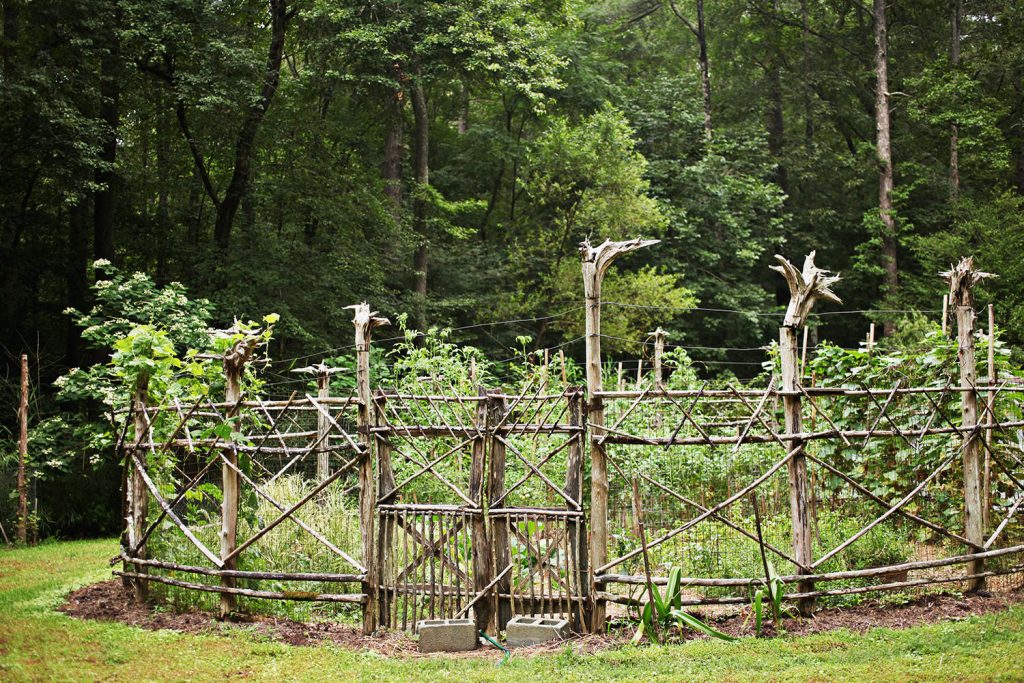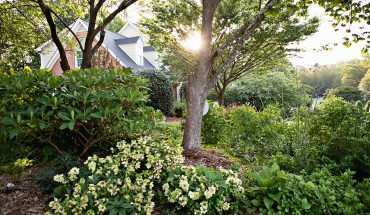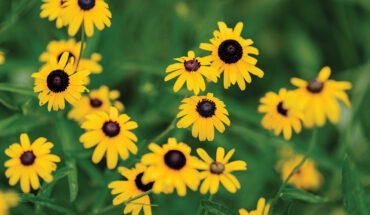From weeding, to waiting, to hoping, here are 8 things to do in your yard this month in preparation for a steamy summer in North Carolina.
by Leah Finch and the Oakwood Garden Club
Glorious May.
A time to cultivate and behold.
Our songbirds sing, with freedom and abandon.
Our canopies sway, showing off the return to their full, lush splendor.
Our roses tantalize, their fragrance wafts over passerby.
Our peonies make good on their promise, once again, to produce blooms so spectacular, their short-lived nature forgotten, eclipsed by splendor.
May beckons beholding. May also invites cultivating. With the danger of frost behind and the oppression of heat ahead, gardeners welcome the wonder of May. May brings with it a sweet opportunity to act in hope. Rich with pruning, weeding, seeding, and mulching, May allows us to act now, our eye fixed on a future reward. Here are 8 ways to act in hope through your garden during May.
Prune spring shrubs after they finish flowering
Pruning is an act of love as much as hope. Pruning evidences a commitment to growth. Pruning is a deliberate, temporary set-back where the gardener chooses to undergo wounding and stripping the plant of present beauty for the sake of its long-term health and greater beauty. To prune: After flowering, prune one-third of the stem or stalk all the way back to just above the leaf or branch intersection. For every place you prune, you’ll get back two or three new growths.
Weed, weed, and weed
Mother Nature is ready to release splendor. Your job is to get everything out of her way. Weeds threaten growth. Remove all obstacles to future growth. To weed: With diligence, remove all uninvited guests from your garden bed. Once you weed, leave no surface bare. Plant ground cover or add mulch.
Mulch your garden beds
Mulch is not just for aesthetics. It helps your plants retain moisture, supports the base of your new plantings and prevents weeds from their prolific takeover. Plus, mulch decomposes over time and makes your soil more organic and rich. To mulch: Take the time to choose the right mulch for the contents of your bed. For example, herbs do not like the acidic environment of pine mulch. Decide what is going to be in your bed before you select your mulch. If you save fall leaves in a compost bin with your other organic matter, you can use them as a leaf mulch. If decomposed completely, mix with your spring soil. Leaf mulch is a gentle mulch, appropriate for a nutrient-rich base with an optional decorative mulch on top.
Plant warm-weather herbs and vegetables
There’s nothing like anticipating Southern summer veggies and the array of color and flavor they bring. Herbs can add flavor to your food and drink. If you let them flower, an aroma rich leaf and bloom brings a lovely addition to table flowers. (Note: For annual herbs, they will stop producing once they flower, so it’s best to choose some for beauty and prune the rest!) To plant veggies and herbs: Once your summer edibles — like basil, beans, cucumbers, eggplant tomatoes peppers, okra, squash, corn, watermelon, and sunflowers — are planted, feed every other week with fertilizer. Water every day for the first week, every other day for two weeks, then twice a week. To protect cucumbers from cucumber beetles, cover with a row cover or netting until they flower.
Plant your summer annuals
A mixture of perennials and annuals in your garden will surely delight the eye. Of course, the advantage of perennials is they return year after year. Annuals, too, have their place! They bloom continuously in their season. To plant annuals: The key is making sure your annuals do well with your perennials as far as watering, light, and environment. Step into freedom and choose your process. Do you enjoy the instant gratification of grounding a plant with a bloom? Do you delight in the spontaneity of throwing out seeds and anticipating the arrival of their little shoot, holding loosely to how and where things grow? Remember, this is your garden, not your neighbor’s — cultivate what brings you joy.
Fertilize summer flowering plants, such as the crepe myrtle
Fertilizer is food for your plants and helps them grow! There are a lot of options for fertilizer and you can choose what’s important to you. On the organic side, Jobe’s is available at most hardware stores and is tailored to plant type. You could also use compost or black cow mix. For non-organic, use an all-purpose fertilizer designed for plants and flowers to fertilize everything. To fertilize: Take some time to do some research and discover the method and product right for you. Fertilize every three to four weeks; especially your oldies, but goodies! For potted plants, fertilize every three weeks.
Move houseplants outside
No plant truly likes to be indoors (“Don’t put baby in a corner!”), so with the temperature rising, now is the perfect time to bring them outside for an adventure. To move houseplants outside: In order to avoid shocking your house plants, look for a mild and rainy day. It’s also advantageous to give your house plant leaves a thorough cleaning. Remember, your plant is a living organism and its foliage needs to be clean! It can’t breathe if it is carrying a layer of dust. Dip a washcloth in water or fertilized water and wipe the leaves.
Start watering more
While there are still some spring showers to be had this time of year, when those don’t gift us with enough water to keep our gardens happy, take to your hose. With temperatures starting to rise, and small summer vegetable plants needing water regularly to take off, now’s time to think about watering more. Potted plants in sunny areas and on decks will need extra hydration, and any seedlings you’ve started might require a mist twice a day. Doing things like adding a layer of leaf mulch to the tops of beds will help garden beds retain moisture too. Remember to water at the beginning of the day so your hard work doesn’t evaporate. This also decreases the risks of mold and mildew, giving the sun time to dry up excess water before nighttime.
May, dear Raleigh, is our invitation to enter, once again, the cyclical call to cultivate and behold, to step into the wonder of both the now… and the not yet.




